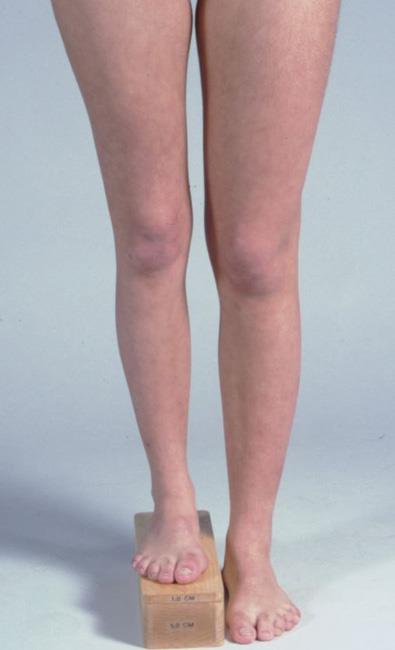
Jump to section
Up to 90% of Australians have some discrepancy in the length of their legs when measured anatomically. While smaller leg length differences
(LLDs) do not produce any noticeable differences, more notable LLDs can lead to changes in a person’s gait that can have painful and
damaging consequences.
 A
leg length difference, also known as a limb length discrepancy, is a physical difference in the length of their legs when two
anatomical points are measured. While it’s not surprising given that our bodies are not perfectly symmetrical, this asymmetry can
be significant because it has the potential to cause pain and other problems, interfering with a person’s movement and their
quality of life. When evaluating a leg length difference, there are two key types:
A
leg length difference, also known as a limb length discrepancy, is a physical difference in the length of their legs when two
anatomical points are measured. While it’s not surprising given that our bodies are not perfectly symmetrical, this asymmetry can
be significant because it has the potential to cause pain and other problems, interfering with a person’s movement and their
quality of life. When evaluating a leg length difference, there are two key types:
Studies looking at leg length differences have found that up to 90% of people have differences with an average 5.2mm - just half a centimetre. Specifically, a recent systematic review on the value of structural (anatomical) leg length differences in the population showed:
Statistically speaking, leg length differences of more than 5 mm are related to an increased risk of osteoarthritis of the hip and knee joints as well as low back pain and lumbar scoliosis, a curvature of the lumbar spine. With this said, it’s important to note that each person can compensate for their LLD in different ways, which means that some people with a 10mm LLD (for example) will be asymptomatic, while others may present with symptoms
While some leg length differences may be natural, there are various other potential causes of a leg length difference, such as:
Having a leg length difference creates a tilt at the hips and various joints in the feet and legs, and can adversely affect your spine too. It can result in other joints and structures being overloaded, stressed, stretched and restricted in their function. This can present in a variety of symptoms, from a limping gait to shorter steps and walking speed, to overuse injuries, stress fractures - and hip, knee and back pain. Here at The Feet People, we look for:
To better understand the true impact of a leg length difference on your body and why the above symptoms may occur, imagine standing with one leg that is slightly longer and one that is slightly shorter. Your shorter leg will have less contact with the ground in the heel region, and your body will likely try to compensate and help bring the shorter foot closer to the ground by tilting your hip down on the shorter side, or keeping your longer knee bent.
When walking and pushing off from the shorter leg, your longer leg may hit the ground instead of swinging through because of its length, so your body will compensate by hitching the hip up, having you swing your leg outwards away from your body instead of straight forwards, or having you lift your knee. These are some of many compensations and all add up when it comes to the potential stress and strain on your joints and body. Other compensations and the symptoms they may cause include:
To manage a leg length difference, we must first understand the size of the difference, the effects that it is currently having on your gait, joints and muscles, and how your body may be compensating. This is done through a comprehensive assessment with our podiatrists at our Brisbane CBD or Newmarket clinics. While we use manual tools to measure both structure and functional LLDs, we can also refer you to have your structural difference formally measured with a CT scan.
From here, your podiatrist wall design a unique management plan based on your symptoms that may include:
| Monday | 7:40am - 6:00pm |
| Tuesday | 7:40am - 6:00pm |
| Wednesday | 7:40am - 6:00pm |
| Thursday |
7:40am - 6:00pm |
| Friday | TEMP CLOSED |
| Saturday | CLOSED |
| Sunday | CLOSED |
Ground Floor, 344 Queen Street,
Brisbane City QLD 4000
| Monday | 7:40am - 6:00pm |
| Tuesday | 7:40am - 6:00pm |
| Wednesday | 7:40am - 6:00pm |
| Thursday |
7:40am - 6:30pm |
| Friday | 7:40am - 5:00pm |
| Saturday | 7:40am - 4:30pm |
| Sunday | CLOSED |
Newmarket Village, 114/400 Newmarket Rd, Newmarket QLD 4051